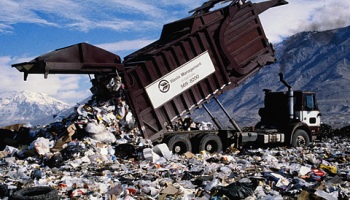Electronic repairs company Comtek has branded the European Union’s five percent e-waste reuse target as ‘pathetic’, claiming it will do little to curb the impact of e-waste on the environment.
Last week, the European Parliament’s environment committee voted in favour of a new package of rules designed to increase e-waste recycling rates and crack down on electronics and waste management firms guilty of illegally exporting old equipment to developing countries.
Currently, the Waste Electrical and Electronic Equipment (WEEE) Directive requires that countries collect an annual target of 4kg of e-waste per citizen. However, MEPs want more stringent collection rules to be enforced in order to cut down on the amount of e-waste that ends up as landfill.
The new rules state that, depending on the category, 70 to 85 percent of all e-waste should be recovered and 50 to 75 percent recycled. A separate five percent reuse target has also been endorsed, so that more functional goods get a new lease of life instead of being scrapped.
Won’t solve the e-waste problem
“The EU is proposing ambitious targets that make impressive headlines, but would do little to actually solve the growing problem of e-waste if enacted,” said Askar Sheibani, chief executive of Comtek. “While a minimum of 70 percent of the collected e-waste would be recycled, the target for reusing unwanted equipment is pathetic by comparison at a miniscule five percent.
 “It’s as if reuse is an afterthought, and if the proposal is passed it will send a clear message to consumers that reuse is not nearly as important as recycling,” he said. “We should not be encouraging people to recycle electronics goods as a first option – a more effective solution would be to repair and reuse equipment wherever possible.”
“It’s as if reuse is an afterthought, and if the proposal is passed it will send a clear message to consumers that reuse is not nearly as important as recycling,” he said. “We should not be encouraging people to recycle electronics goods as a first option – a more effective solution would be to repair and reuse equipment wherever possible.”
Sheibani argues that this would not only reduce the amount of e-waste being produced, but would also create sustainable and highly skilled employment within the repair industry.
The new EU rules also require retailers to accept old laptops, computers, phones and other electronic devices, whether the customer has made a new purchase or not. This forces the retailer to bear the costs of processing e-waste, rather than the general taxpayer. According to Sheibani, however, this is simply not practical – particularly as many products are now purchased online or from overseas sellers.
“Retailers would just end up having to ship unwanted gear between branches or distribution centres, which would be costly and complicated to administer,” he said. “It would make much more sense to cut out the middle-man completely and send equipment directly to organisations that already accept electronic goods for reuse and recycling, without making a charge to the consumer.”
Computer Aid launches advocacy guide
Meanwhile, British IT charity Computer Aid International has this week launched a 52-page guide for NGOs and civil society actors on how to develop an effective campaign for positive change in the area of electronics and e-waste. The guide contains practical information for communication to politicians, the media and the general public and details the e-waste lobbying strategies of civil society organisations in the EU.
“We continue to see the flow of e-waste from wealthier countries that are able to deal with e-waste safely and fairly, to countries without this capacity,” said Gladys Muhunyo, Computer Aid’s director of international programmes. “We hope that this toolkit will enable civil society actors to push for change in their countries and bring about the essential first step in building the capacity to minimise the environmental, health and social impacts of electronics and e-waste.”
The guide is currently available in six languages and can be downloaded from the Computer Aid website.
QX9P4RAR6ATB




